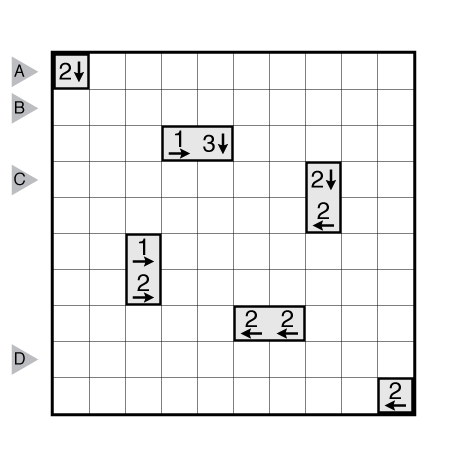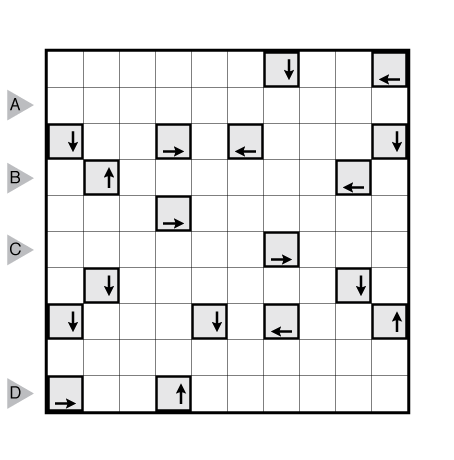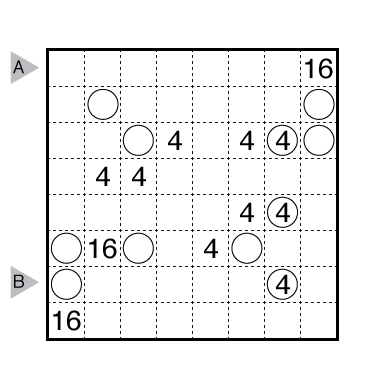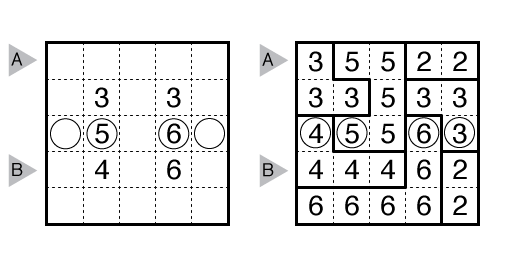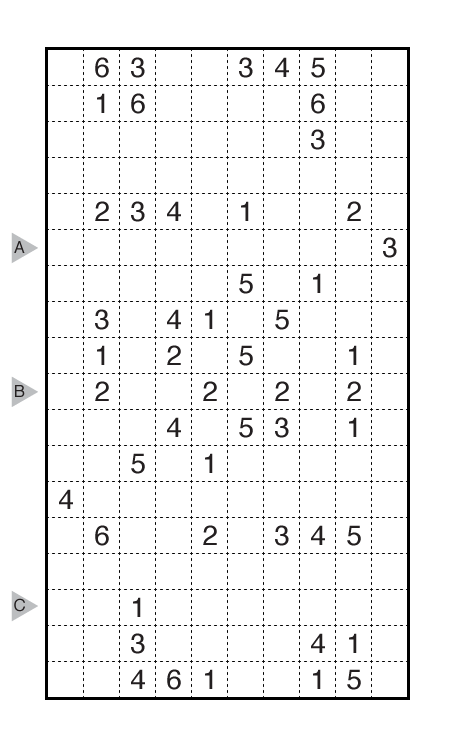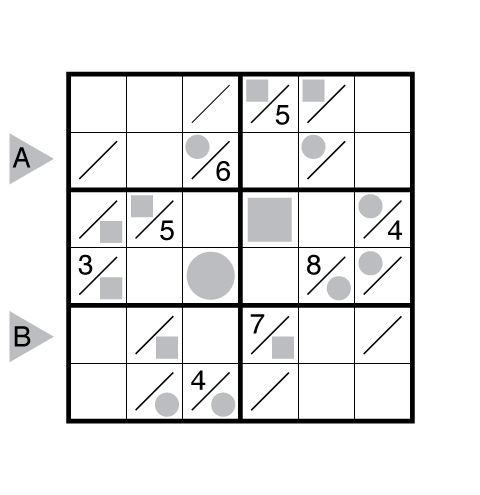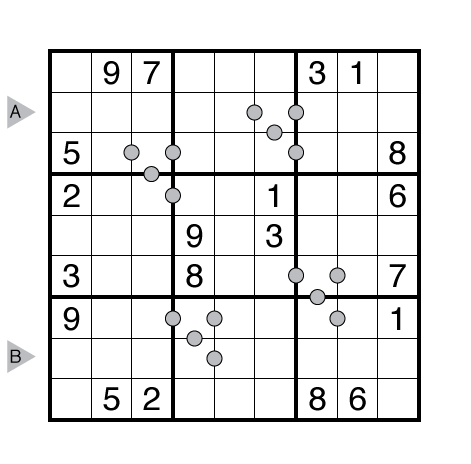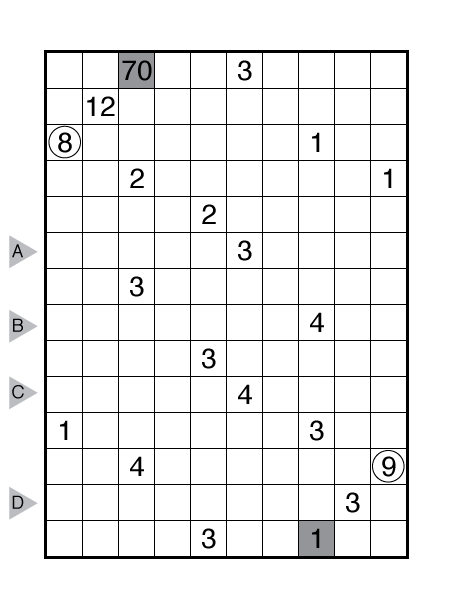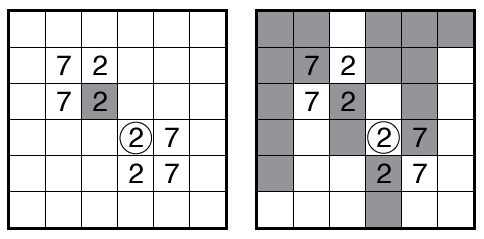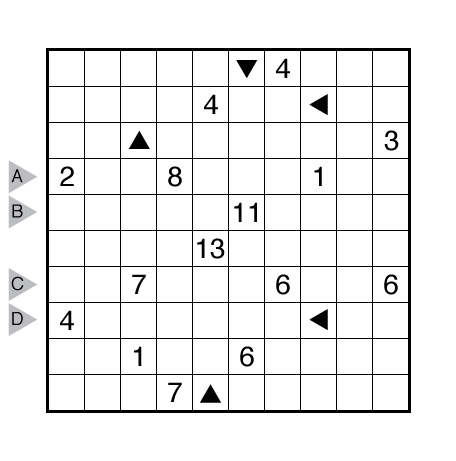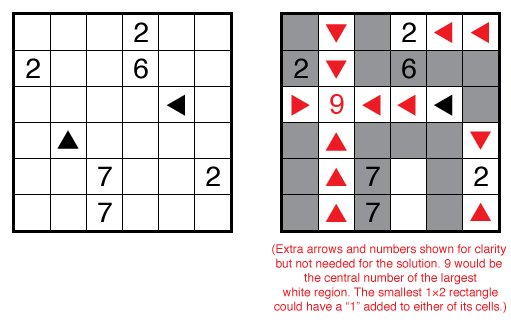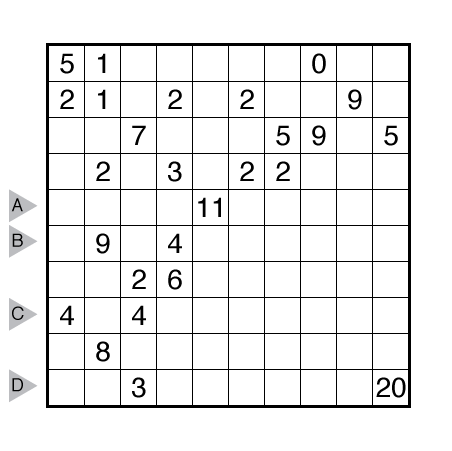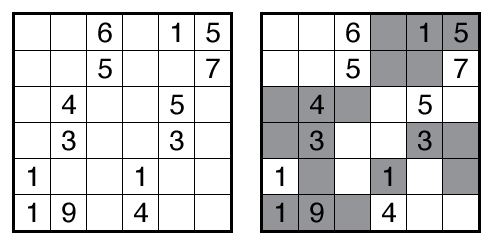(Note: puzzles during this bonus week are harder than usual; the four puzzles from Monday-Thursday are all about Thursday or Friday level difficulty.)
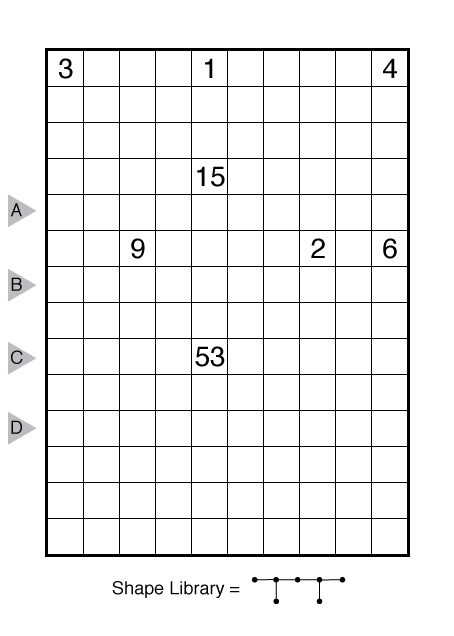
PDF
or solve online (using our beta test of Penpa-Edit tools; use tab to shift between shading mode and the linex mode where left click+drag draws lines and right click marks X’s)
Theme: Pi
Author/Opus: This is the 41st puzzle from our contributing puzzlemaster John Bulten.
Rules: Shade some white cells black so that the grid is divided into white and black regions. Cells with numbers cannot be shaded. Each white region must contain exactly one number and have the same area in cells as that number. Two white or two black regions may only touch diagonally. Each black region must be exactly specified by one shape graph given below the grid, where graph edges represent one-cell-wide straight paths with variable lengths, and graph nodes represent ends, turns, and branch points. Graphs can be rotated and reflected, and, if multiple graphs are given, not all need be used.
Also see this example:
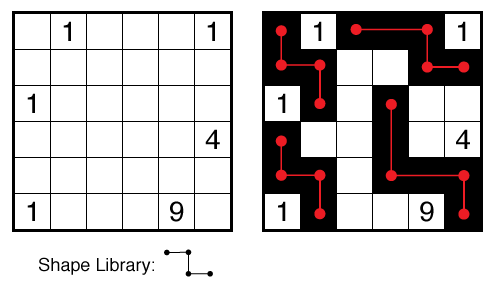
Answer String: Enter the length in cells of each of the black segments from left to right for the marked rows. Separate each row’s entry from the next with a comma.
Time Standards (highlight to view): Grandmaster = 3:45, Master = 6:00, Expert = 12:00
Solution: Answers for this week in this PDF.
Note: Surf is a shading/object placement puzzle created by Izak Bulten, which draws on elements from other shading puzzles like Nurikabe. We will have several more Surf puzzles from Izak and John Bulten in a few months when we start a new “Puzzlemasters’ Workshop” book series.
